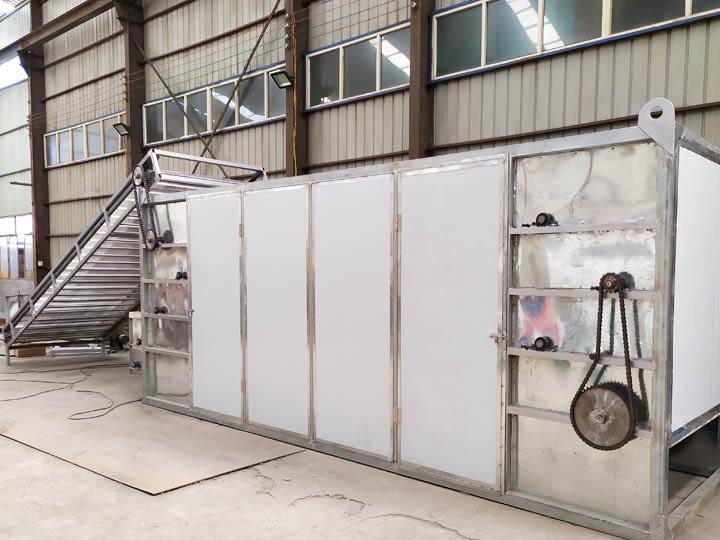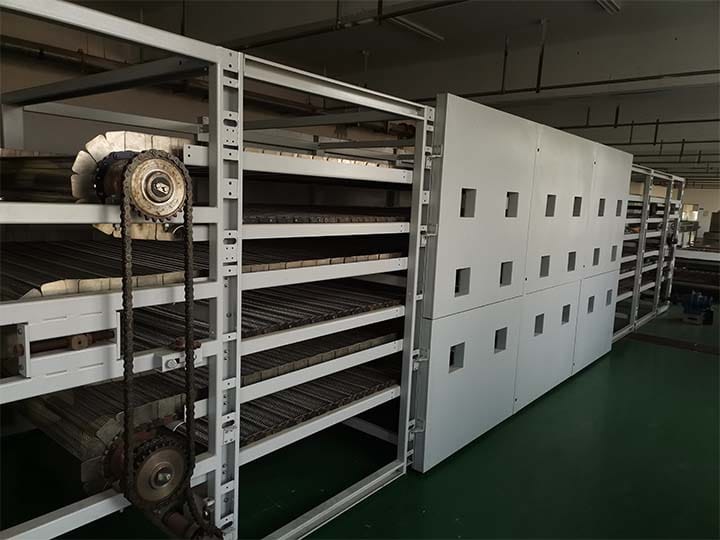
Continuous conveyor dryers are vital equipment in the food industry for efficient drying and dehydration processes. These machines offer a convenient and cost-effective solution for preserving food products while maintaining their quality. In this article, you will know the working principle of a belt dryer in food industry and delve into the factors that influence the cost of a dryer belt machine.

Working Principle of a Belt Dryer in food industry
The working principle of a continuous conveyor dryer in the food industry is based on the concept of continuous drying using a conveyor system. The dryer consists of a perforated belt that moves through a series of heating chambers. As the belt moves, the food product is spread evenly on its surface, allowing for uniform heat transfer.
What is the working process of the belt dryer
The first stage in the drying process involves the loading of the wet food product onto the belt. The product is then conveyed through the heating chambers, where hot air is circulated using fans. The hot air absorbs the moisture from the food, causing evaporation. The moisture-laden air is then expelled from the continuous conveyor dryer through vents or exhaust systems.
The temperature and airflow within the belt dryer in food industry are carefully controlled to ensure optimal drying conditions for different food products. This control is crucial to maintain the quality, flavor, and nutritional value of the dried food items.

Cost of a Dryer Belt
The cost of a dryer belt can vary depending on several factors. The primary considerations include the material used for the belt, its dimensions, and the specific requirements of the food industry.
Material
Continuous conveyor dryers are typically made from materials such as stainless steel, polyester, or polypropylene. Stainless steel belts are durable and can withstand high temperatures, making them suitable for heavy-duty applications. Polyester and polypropylene belts are more cost-effective options that offer good resistance to wear and tear.
Dimensions
The size and width of the belt also impact its cost. Larger belts require more materials and incur higher manufacturing costs. The dimensions of the belt depend on the capacity and throughput requirements of the food processing facility.

Customization
Some food industry applications may require specialized features or modifications in the dryer belt design. Customization adds to the overall cost as it involves engineering expertise, additional materials, and manufacturing processes.
Supplier and Quality
The cost can vary based on the supplier and the quality of the continuous conveyor dryer. It is advisable to choose reputable manufacturers or suppliers known for their reliability, quality products, and after-sales support. While the initial investment may be higher, it ensures a longer lifespan and reduces maintenance and replacement costs in the long run.
Welcome to contact us
Continuous conveyor dryer play a crucial role in the food industry by providing an efficient and continuous drying solution. If you want to know more information about the dryer, welcome to contact us.
